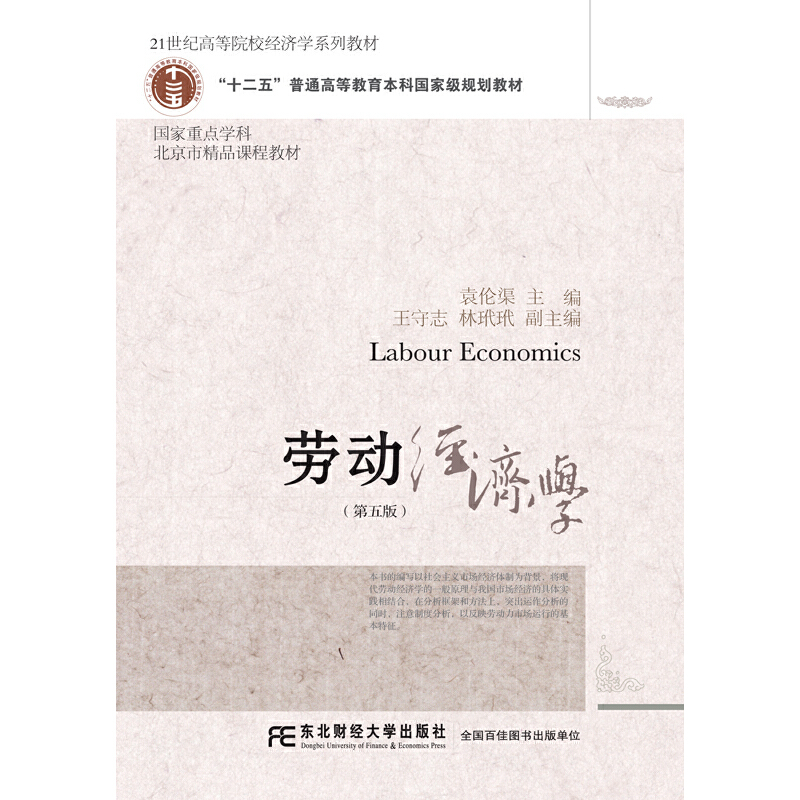经济学(宏观部分·英文版) / 高等学校经济管理英文版教材·双语注释版
定价:¥59.00
作者: [美]迪恩.卡尔兰等著
译者:贺京同 译;
出版时间:2016年12月
出版社:机械工业出版社
- 机械工业出版社
- 9787111558651
- 1-1
- 45888
- 43180127-3
- 16开
- 2016年12月
- 750
- 348
- F0
- 经济管理类
- 本科
内容简介
依据背景,本书的两位作者可以被描述为学术经济学家、教师和政策顾问。本书把经济学这门大家都很熟悉的课程,与新的研究和应用领域相关的材料相结合,如金融学、行为经济学、政治经济学,并且与学生分享他们所学习的内容为何如此重要。本书采用的这种现代方法能够围绕着学习目标进行组织,并且与良好的评估工具进行匹配,旨在提高学生的分析和批判性思维能力。学生和教师将可以在书中找到打破了课堂与国家及更广阔世界界限的内容。
目录
目 录*导读作者简介前言经济学的主线新式教学方法补充材料致谢术语表第三部分 宏观经济学的数据第7章 国民财富的核算37.1 衡量一个经济体47.2 GDP核算的方法87.3 利用GDP进行不同经济体间的比较147.4 GDP度量的局限性207.5 结论27第8章 生活成本358.1 生活成本368.2 度量价格随时间的变化378.3 价格指数的应用438.4 不同地区价格差异的计算498.5 结论53第四部分 经济增长与失业第9章 经济增长619.1 历史上的经济增长629.2 生产率的决定因素669.3 增长与公共政策729.4 结论78第10章 失业与劳动需求8310.1 定义和衡量失业8410.2 劳动市场的均衡9010.3 失业的类型9310.4 关于失业的公共政策和其他影响因素9510.5 结论102第五部分 处于短期和长期中的经济第11章 总需求和总供给10911.1 把所有要素加在一起11011.2 总需求11111.3 总供给11611.4 经济波动12411.5 公共政策的作用13211.6 结论134第12章 财政政策13912.1 财政政策14012.2 乘数模型14912.3 政府预算15312.4 公债15512.5 结论158第六部分 金融体系和金融机构第13章 金融学基础16713.1 金融市场的作用16813.2 借贷市场:一个简化的金融市场17113.3 现代金融体系17813.4 资产评估18613.5 金融的国民核算方法19013.6 结论193第14章 货币和货币体系19914.1 何为货币20014.2 银行与货币创造过程20414.3 管理货币供给:美联储21114.4 货币政策的经济效应21714.5 结论224第15章 通货膨胀22915.1 变动的物价水平23015.2 我们为什么关注价格水平的变化23715.3 通货膨胀与货币政策24715.4 结论255第16章 金融危机26116.1 金融危机的起源26216.2 大衰退:金融危机案例研究26716.3 结论279第七部分 国际政策议题第17章 开放市场下的宏观经济学28717.1 商品与资本的国际流动28817.2 国际资本流动29517.3 汇率30017.4 全球金融危机31317.5 结论316第18章 发展经济学32118.1 发展与可行能力32218.2 发展经济学的基本要素32418.3 援助能做什么33318.4 结论342Contents*ForewordAbout the AthorsPrefaceEconomics as a Common ThreadModern Teaching ApproachSupplementsAcknowledgementsGlossaryPART 3The Data of MacroeconomicsCHAPTER 7 Measuring the Wealth of Nations 3It’s More Than Counting Peanuts 3Valuing an Economy 4Unpacking the Definition of GDP 5Production Equals Expenditure Equals Income 7Approaches to Measuring GDP 8The Expenditure Approach 8The Income Approach 11The ”Value-Added” Approach 13Using GDP to Compare Economies 14Real versus Nominal GDP 14The GDP Deflator 16Using GDP to Assess Economic Health 17Limitations of GDP Measures 20Data Challenges 21GDP vs. Well-Being 24Conclusion 27CHAPTER 8 The Cost of Living 35Thank You for Not Smoking 35The Cost of Living 36Measuring Price Changes over Time 37The Market Basket 38Consumer Price Index 39The Challenges in Measuring Price Changes 40Using Price Indexes 43The Inflation Rate 43Deflating Nominal Variables 44Adjusting for Inflation: Indexing 47Accounting for Price Differences across Places 49Purchasing Power Parity 49Purchasing Power Indexes 50PPP-Adjustment 52Conclusion 53PART 4Economic Growth and UnemploymentCHAPTER 9 Economic Growth 61Why Economic Growth Matters 61Economic Growth through the Ages 62History of World Growth 62Compounding and the Rule of 70 64Determinants of Productivity 66Productivity Drives Growth 67Components of Productivity 67Rates versus Levels 69Convergence 70Growth and Public Policy 72Investment and Savings 72Education and Health 74Technological Development 74Laying the Groundwork: Good Government, Property Rights, and Economic Openness 75The Juggling Act 76Conclusion 78CHAPTER 10 Unemployment and the Demand for Labor 83What Does It Mean to Be Unemployed? 83Defining and Measuring Unemployment 84Measuring Unemployment 85Beyond the Unemployment Rate 88Where Do the Data Come from? 89Equilibrium in the Labor Market 90Categories of Unemployment 93Natural Rate of Unemployment 93Cyclical Unemployment 94Public Policies and Other Influences on Unemployment 95Factors that May Stop Wage Rates from Falling 97Unemployment Insurance 99Other Factors: Taxes and Worker Rights 101











